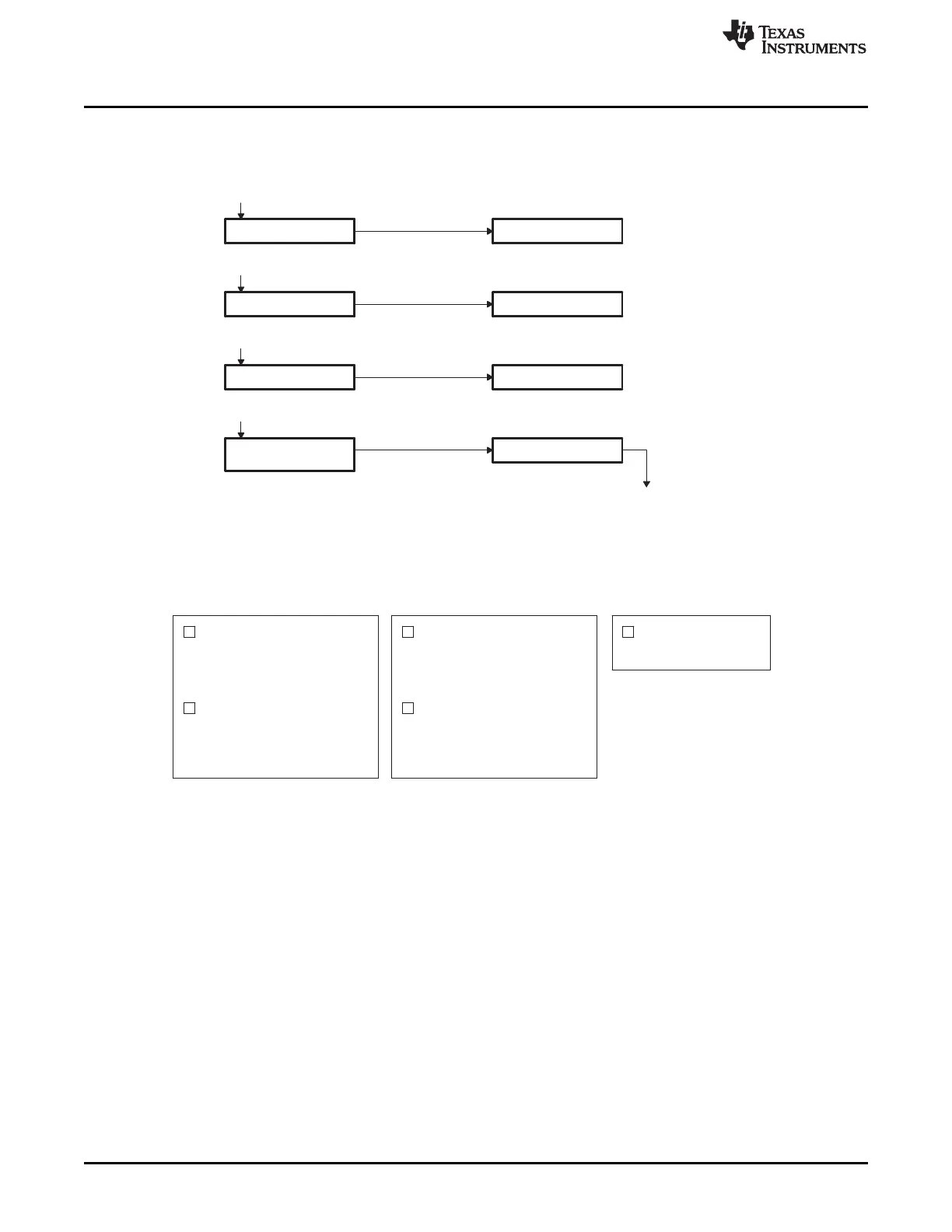Channel 48, array 0
Intermediate
transfer complete
(A)
Channel 8, array 0
Event 48
Hardwired event
(tied to GPINT0, event 48)
Chained event
(event 8)
Channel 48, array 1
Event 48
Channel 8, array 1
Intermediate
transfer complete
(A)
Channel 8, array 3
Channel 48, array 3
Channel 48, array 2
Event 48
Event 48
Channel 8, array 2
Transfer complete
(B)
Intermediate
transfer complete
(A)
(last array)
Transfer complete sets
IPR.I8 = 1
If IPR.I8 = 1, interrupt
EDMACC_INT* sent
Notes:
(A) Intermediate transfer complete chaining synchronizes event 8
ITCCHEN = 1, TCC = 01000b, and sets CER.E8 = 1
(B) Transfer complete chaining synchronizes event 8
TCCHEN =1, TCC = 01000b and sets CER.E8 = 1
to CPU
Enable transfer
complete chaining:
OPT.TCCHEN = 1
OPT.TCC = 01000b
Enable intermediate transfer
complete chaining:
OPT.ITCCHEN = 1
OPT.TCC = 01000b
Disable intermediate transfer
OPT.TCINTEN = 1
OPT.ITCCHEN = 0
complete chaining:
OPT.TCC = 01000b
complete chaining:
Enable transfer
Setup
Channel 48 parameters
for chaining for chaining
Channel 8 parameters
Enable channel 48
EER.E48 = 1
Event enable register (EER)
Functional Description
www.ti.com
Figure 11-39. Intermediate Transfer Completion Chaining Example
11.3.19.4.5.2 Breaking Up Large Transfers with Intermediate Chaining
Another feature of intermediate transfer chaining (ITCCHEN) is for breaking up large transfers. A large
transfer may lock out other transfers of the same priority level for the duration of the transfer. For example,
a large transfer on queue 0 from the internal memory to the external memory using the EMIF may starve
other EDMA3 transfers on the same queue. In addition, this large high-priority transfer may prevent the
EMIF for a long duration to service other lower priority transfers. When a large transfer is considered to be
high priority, it should be split into multiple smaller transfers. Figure 11-40 shows the EDMA3 setup and
illustration of an example single large block transfer.
934
Enhanced Direct Memory Access (EDMA) SPRUH73H–October 2011–Revised April 2013
Submit Documentation Feedback
Copyright © 2011–2013, Texas Instruments Incorporated
